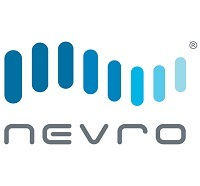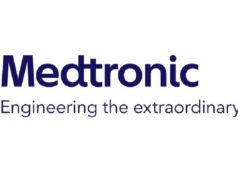 Nevro has announced three clinical data publications on treating painful diabetic neuropathy (PDN) with 10kHz spinal cord stimulation (SCS) therapy—including 12-month data from the SENZA-PDN randomised controlled trial (RCT) published online in Diabetes Care. In addition, the company announced publication of real-world evidence and a comparative literature review of high- vs. low-frequency SCS evidence, both of which are published in the Journal of Diabetes Science and Technology.
Nevro has announced three clinical data publications on treating painful diabetic neuropathy (PDN) with 10kHz spinal cord stimulation (SCS) therapy—including 12-month data from the SENZA-PDN randomised controlled trial (RCT) published online in Diabetes Care. In addition, the company announced publication of real-world evidence and a comparative literature review of high- vs. low-frequency SCS evidence, both of which are published in the Journal of Diabetes Science and Technology.
According to a Nevro press release, findings from all three studies highlight the significant benefits of HFX therapy for PDN in clinical and real-world settings. The company also claims that HFX for PDN is the only SCS system approved by the US Food and Drug Administration (FDA) with a specific on-label indication for treating PDN.
“These three important clinical data publications further expand the growing body of positive clinical evidence supporting the use of 10kHz therapy in treating PDN patients, and continue to clearly demonstrate the safety, durability and consistency of pain relief and other outcomes that can be achieved with HFX for PDN in both clinical and real-world settings,” said Keith Grossman, chairman, CEO and president of Nevro.
“No conventional, low-frequency SCS treatments have demonstrated such positive results in treating PDN patients. We believe that these data, along with our robust clinical dossier, will help support expansion of payer coverage policies to exclusively cover 10kHz therapy for PDN. These data highlight our commitment to deliver comprehensive, life-changing solutions that continue to set the standard for enduring patient outcomes in chronic pain treatment.”
Twelve-month SENZA-PDN results
Published 12-month data from the SENZA-PDN RCT—the largest RCT to evaluate SCS to treat PDN—show that high-frequency 10kHz therapy results in significant, durable pain relief and neurological improvements in patients with persistent PDN. The publication also includes results for patients before and after crossover from the trial’s conventional medical management (CMM) arm to 10kHz therapy. These findings further substantiate the benefit of HFX for PDN, a Senza SCS system that uses 10kHz therapy to treat pain from diabetic neuropathy, the release adds.
“Patients with painful diabetic neuropathy have no way to cure their condition, and many have trouble achieving relief from their pain,” said Erika Petersen, professor of neurosurgery and director of functional and restorative neurosurgery at the University of Arkansas for Medical Sciences (Little Rock, USA), and lead investigator of the SENZA-PDN study. “However, with high-frequency 10kHz therapy, I am seeing durable pain relief and potentially disease-modifying neurological improvements, which could be a gamechanger when it comes to how we treat patients with impaired sensory function.”
The release notes that the SENZA-PDN RCT 12-month data demonstrate the following benefits of 10kHz SCS:
- Durable pain relief: At 12 months, 86% of participants in the 10kHz SCS study arm reported pain relief >50%, while the average pain relief was 77.1%. After six months with 10kHz SCS therapy, 84% of participants in the crossover arm reported pain relief >50%, and average pain relief was 70.3%.
- Consistent safety: Safety was consistent with published reports of adverse event rates in traditional SCS trials, including for infections and explants in people without diabetes. Only five of 154 permanent SCS devices were explanted for a 3.2% explant rate (all explants were due to infection).
- Neurological improvement: At 12 months, 68% of the 10kHz SCS treatment group had observed improvement upon an investigator-assessed neurological examination, which included testing lower limb motor strength, sensory function, and reflexes. And, after six months with 10kHz SCS therapy, 62% of the crossover arm had observed improvement upon an investigator-assessed neurological examination.
Real-world evidence for treatment of PDN
Another report, entitled “A real-world analysis of high-frequency 10kHz spinal cord stimulation for the treatment of painful diabetic peripheral neuropathy” and published in the Journal of Diabetes Science and Technology, is a retrospective, multicentre, real-world review in typical clinical practices that assessed pain relief and functional improvements for patients who were trialled and permanently implanted with a 10kHz SCS device.
These data were extracted from a real-world database of patients (HFX Cloud) with diabetic neuropathy, according to the release. Results from this real-world review demonstrated:
- Some 79.5% of patients (58/73) were treatment responders, defined as having at least 50% patient-reported pain relief from baseline
- Average follow-up was 21.8 months (range=4.3 to 46.3 months)
- Majority of patients reported improvements in sleep and overall function relative to their baseline
High- vs. low-frequency SCS in PDN
Also published in the Journal of Diabetes Science and Technology is “Neuromodulation in the treatment of painful diabetic neuropathy: a review of evidence for spinal cord stimulation”—a comparative literature review that evaluated current evidence for both high-frequency and low-frequency SCS to treat PDN.
The Nevro release concludes that this analysis concluded that high-frequency (10kHz) SCS offers several advantages over low-frequency, paraesthesia-dependent SCS, including:
- Greater pain relief
- A higher proportion of patients achieving treatment success
- Paraesthesia-free
- Evidence of improved neurological function













